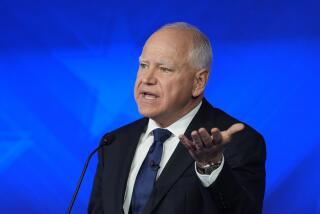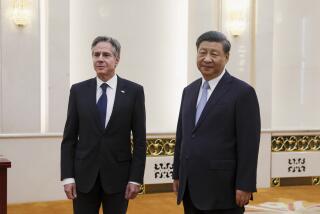U.S.-China Summits: A History
The Nixon administration
Feb. 21-28, 1972: President Richard Nixon visits China.
The historic trip is the first by a U.S. president and follows extensive preparation by Henry Kissinger and Chinese Premier Chou En-lai.
Nixon exchanges compliments and discusses poetry with ailing Chinese leader Mao Tse-tung, and the president and Chou trade toasts with potent Chinese liquor. To mark the occasion, Madame Mao receives the state visitors in traditional Chinese silks.
The visit produces the 1,800-word Shanghai Communique, in which the U.S. acknowledges that Taiwan is a part of âone China,â and which has been the basis of U.S.-China relations since.
Nixon later describes his trip as âthe week that changed the world.â He would return six times after his resignation in 1974, including a controversial visit in 1989 just four months after the June 4 Tiananmen Square massacre.
The Ford administration
Dec. 1-5, 1975: President Gerald Ford visits China.
Relations are tense, in part because of Chinaâs chaotic political transition. Though still lucid, Mao Tse-tung is suffering from Parkinsonâs disease and can no longer speak coherently or stand without assistance.
Although Ford reaffirms the goal of normalizing still evolving bilateral relations, little substantive progress is made.
The Carter administration
Jan. 1, 1979: President Jimmy Carter establishes full diplomatic relations with China.
The decision is heavily criticized by Republicans.
Jan. 28 to Feb. 5, 1979: Deng Xiaoping, as vice premier, becomes the first senior Chinese official to visit the U.S.
(Carter does not visit China during his presidency.)
The Reagan administration
April 26 to May 1, 1984: President Ronald Reagan visits China.
Reaganâs visit comes three days after Armand Hammer announces a $600-million coal mining deal for his company, Occidental Petroleum Corp., setting a new mark for American investment in China. One of Reaganâs first actions on the trip is to initial a deal aimed at allowing U.S. companies to participate in Chinaâs nascent nuclear power industry.
Reaganâs visit also highlights improving cultural relations, which were damaged after the defection of a Chinese tennis player to the U.S. in July 1982. Reaganâs trip coincides with a Beijing exhibit of American oil paintings put on by the Brooklyn Museum. And Reagan and Chinese Premier Zhao Ziyang sign a cultural accord that, among other things, paves the way for an exchange of film festivals in early 1985, allowing the Chinese to see âStar Warsâ for the first time.
Reaganâs visit comes only months before the Los Angeles Summer Olympics. China sends a full Olympic delegation for the first time since the establishment of the Peopleâs Republic of China in 1949. (It sent one athlete to the 1952 Games in Helsinki, Finland.)
The Bush administration
Feb. 25-26, 1989: President George Bush visits China.
The 40-hour trip to Beijing is more like a stopover on the way back from the funeral in Tokyo of Japanese Emperor Hirohito. It ends up being his only visit to China as president.
Bush does a live interview on Chinese Central Television in front of an estimated 600 million Chinese viewers. The interview is immediately followed by the Chinese-translated version of Disneyâs âMickey and Donald Show.â
The president and First Lady Barbara Bush visit Chongwenmen Church, where their daughter was baptized as a teenager when Bush headed the U.S. mission to China in 1974 and 1975.
Bush invites renowned physicist and prominent dissident Fang Lizhi to a Texas-style barbecue at Beijingâs Great Wall Sheraton. The police prevent Fang from attending and the Chinese government responds angrily to what it sees as an affront.
Bush meets with Premier Li Peng, Party Secretary Zhao Ziyang and âparamount leaderâ Deng Xiaoping, who tells Bush, âSince your visit is a working visit, the protocol is simple. It is hoped that you will be able to come to China for an official visit at an appropriate time.â
Slightly more than three months later, Deng orders Chinese soldiers to forcibly clear Tiananmen Square of protesters, resulting in at least hundreds of deaths. Under pressure from angry Americans, Bush imposes economic sanctions.
The Clinton administration
President Clintonâs meeting with President Jiang Zemin this week will mark the first visit, official or otherwise, by an American president since the Tiananmen Square massacre.
Clinton has maintained the âone Chinaâ policy and has continued to work on reinforcing intellectual property rights, decreasing Chinaâs huge trade surplus and encouraging human rights.
More to Read
Sign up for Essential California
The most important California stories and recommendations in your inbox every morning.
You may occasionally receive promotional content from the Los Angeles Times.










